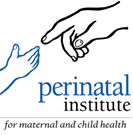


|

|



The GAP Care Pathway is aligned with and complementary to the Fetal Growth element of the NHS Saving Babies Lives' Care Bundle v3.
It is available here: GAP Guidance
See also our FAQ pages
To access the E-Learning portal please use the following link: GAP-Elearning
Data entered on GROW 2.0 is available to all users for monitoring and benchmarking.
See introductory video and interactive app with simulated data for individual trust and national averages.To view your Trusts data and benchmark against national data please login to GROW 2.0 and use 'Dashboard' icon on the landing page.
GAP training: dates of forthcoming workshops are listed here.
SFH - Standardised fundal height measurement video.
GROW 2.0: Upgrade to electronic chart and recording system
Tools: See here for a list of Fetal Growth Tools
According to ONS figures, stillbirth rates in England have fallen consistently
for 9 years to their lowest point of 3.80/1000 in 2020. This represents a 29.0% reduction from the 2000-09 (10 year) average of 5.35, and equates to 1,022 babies saved per year.
Our 10 year, unit level analysis (doi.org/10.1002/uog.22187) showed
There was a flattening of the downward trend during the pandemic in 2020 and a sharp increase in 2021. Since then, stillbirth rates have started to reduce again, towards levels reached before the pandemic.